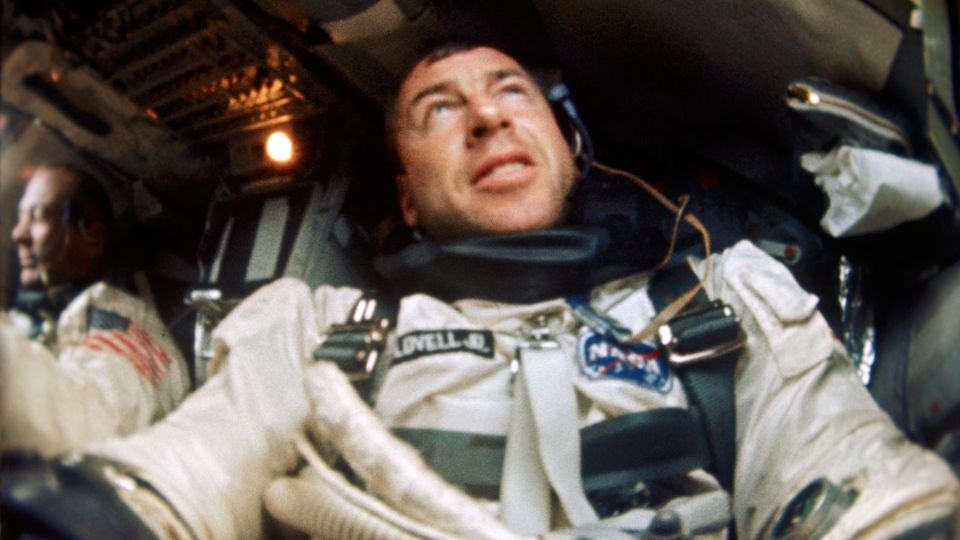A Legacy of Courage and Innovation
Jim Lovell, a celebrated NASA astronaut who commanded the Apollo 13 mission, has passed away at the age of 97. His death occurred on August 7 in Lake Forest, Illinois, though the exact cause remains undisclosed. Lovell’s family expressed their deep sorrow in a statement, describing him as a beloved father, a Navy officer, an astronaut, and a leader. They emphasized his incredible contributions to space exploration and how he was more than just a hero—he was a cherished member of their family.
Lovell’s journey into space began with several significant missions before he was chosen to lead Apollo 13. He had already participated in the Gemini 7, Gemini 12, and Apollo 8 missions, each contributing to the advancement of human spaceflight. However, the Apollo 13 mission became one of the most memorable in NASA history due to the unexpected challenges it faced.
The Ill-Fated Mission
Apollo 13 was intended to be the third successful lunar landing, but the mission took a dramatic turn when an oxygen tank exploded during the flight. This event forced the crew to abandon their plans for a moon landing and instead focus on returning safely to Earth. Lovell famously reported the issue to mission control with the words, “Houston, we’ve had a problem.”
With critical systems damaged, the crew had to rely on ingenuity and teamwork to navigate their way back. They performed multiple engine burns to redirect their course and ultimately made a safe splashdown in the South Pacific Ocean after three days. This mission, although not achieving its original goal, is now recognized as a “successful failure” due to the remarkable efforts that ensured the crew’s survival.
The story of Apollo 13 was later dramatized in the 1995 film “Apollo 13,” where Tom Hanks portrayed Lovell. Although he didn’t play the main role in the film, Lovell made a brief appearance as the captain of the USS Iwo Jima, the ship that recovered the crew after their return.
A Life of Exploration and Achievement
Lovell’s career was marked by numerous achievements. He was the first astronaut to make four spaceflights, spending over 715 hours in space. As part of NASA’s second astronaut class, he was known as one of the “New Nine.” His experiences on Apollo 8 and Apollo 13 made him the first person to see the moon up close twice.
During the Apollo 8 mission, Lovell described the experience as akin to a “mini Lewis and Clark expedition,” highlighting the significance of exploring new frontiers. The mission also provided a historic moment when the crew shared a broadcast from the moon, reaching an estimated 1 billion people worldwide. This event coincided with a time of national uncertainty, offering a much-needed sense of hope and unity.
Recognition and Impact
Lovell’s contributions were widely recognized. He received the Presidential Medal of Freedom in 1970 and served in various leadership roles within NASA. His work on Apollo 8 earned him recognition from Time Magazine as one of the “Men of the Year” in 1968. The mission not only inspired awe but also sparked a broader interest in space exploration and environmental awareness.
Lovell continued to be involved in discussions about space exploration and artifact ownership. In 2011, a checklist from Apollo 13 sold at auction, leading to a debate about the rights of astronauts to their personal items. This issue was eventually addressed through legislation, granting astronauts full ownership of artifacts from their missions.
Reflections and Legacy
Throughout his life, Lovell remained a source of inspiration for many. His ability to remain calm under pressure and his innovative thinking were instrumental in the success of the Apollo 13 mission. He often spoke about the importance of perseverance and collaboration in overcoming challenges.
Lovell’s legacy extends beyond his accomplishments in space. He left behind a family and a community that will remember him for his unwavering optimism, humor, and dedication to making the impossible possible. His story continues to inspire future generations of explorers and leaders.

